BP oil spill in the Gulf of Mexico
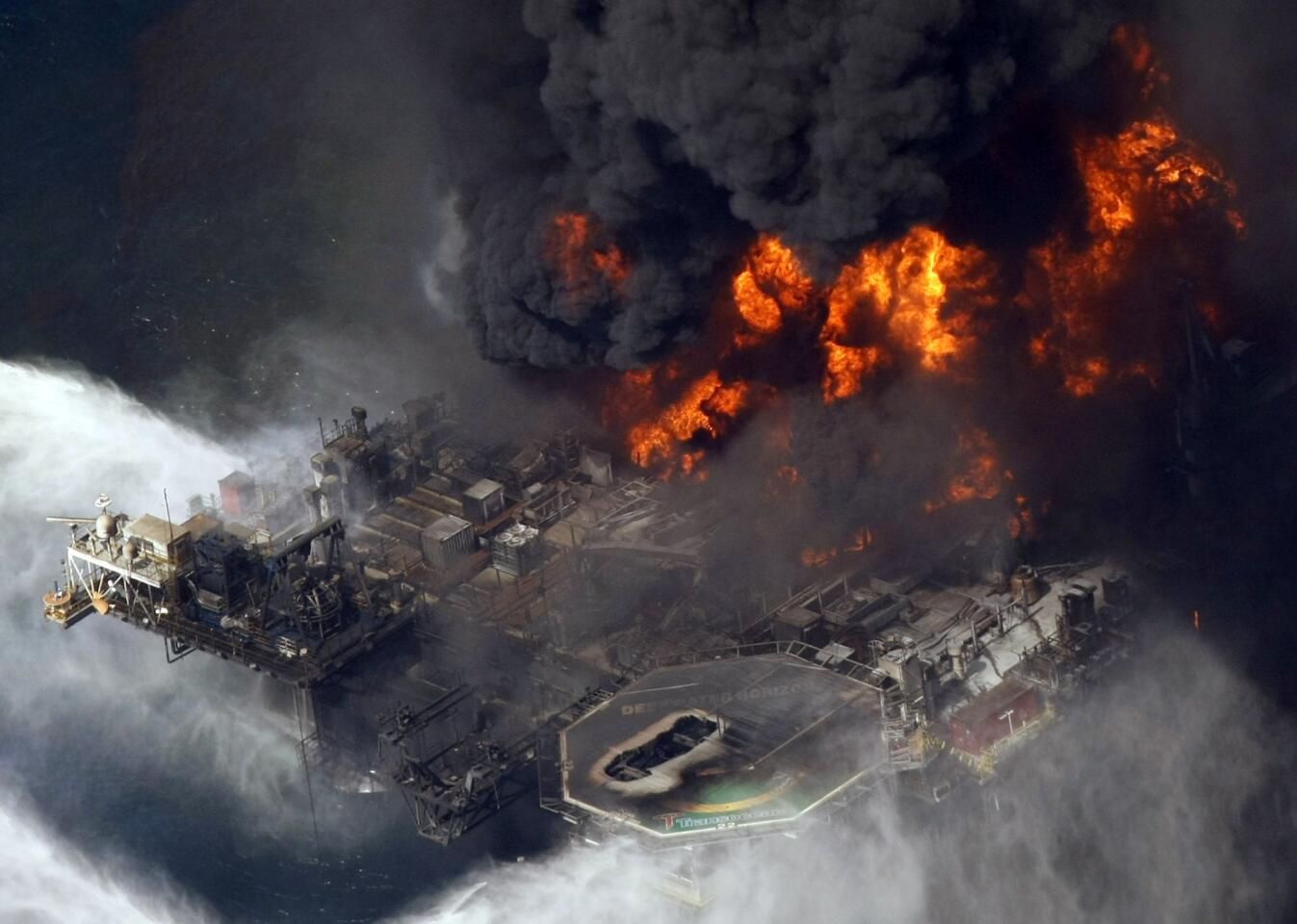
The explosion April 20, 2010, aboard the Deepwater Horizon rig killed 11 people. The rig was about 50 miles southeast of Venice, La. (Gerald Herbert / Associated Press)
A timeline of events in the BP Deepwater Horizon oil spill
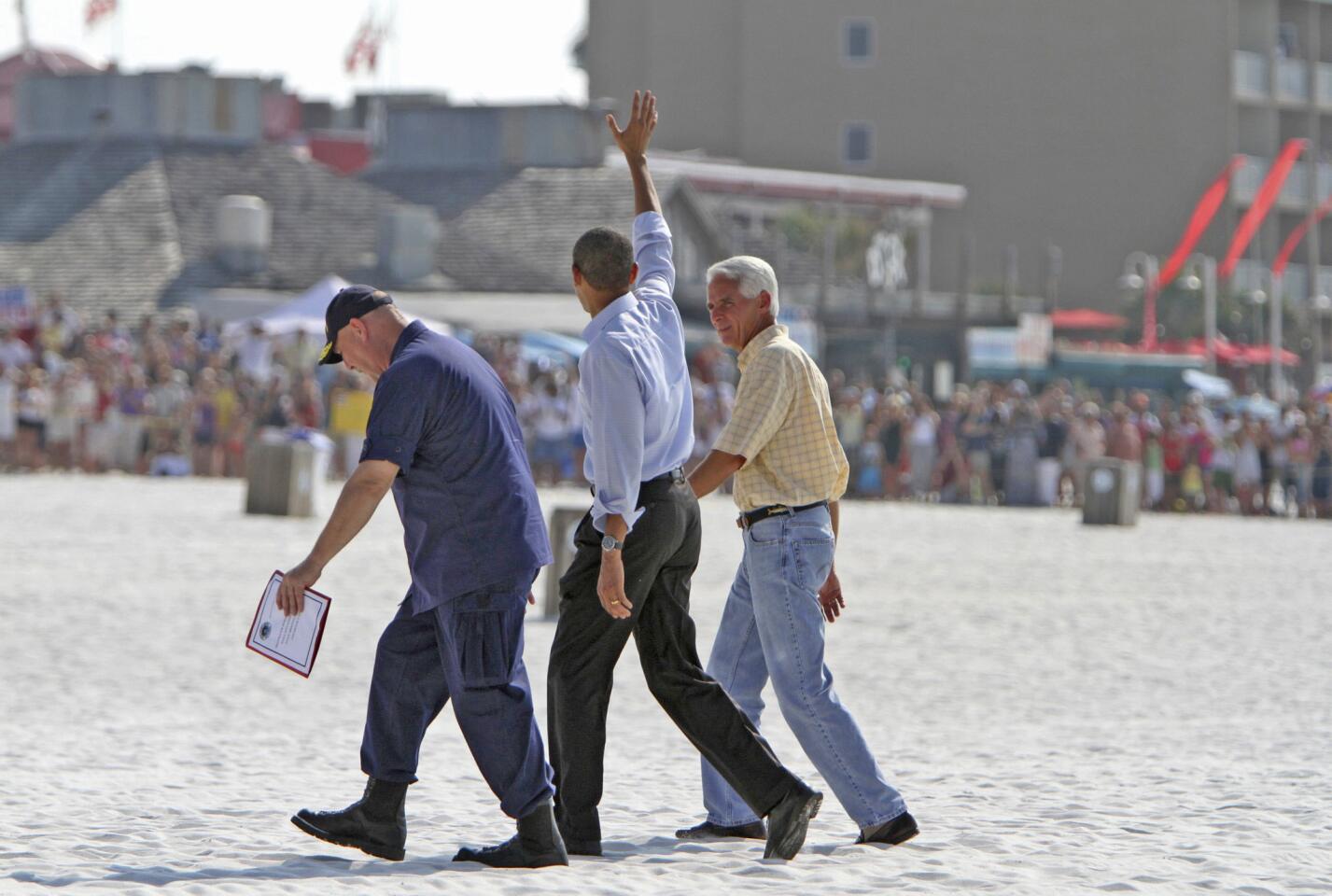
President Obama on May 2, 2010, visits the Gulf Coast region affected by the BP Deepwater Horizon oil spill. (Charles Dharapak / Associated Press)
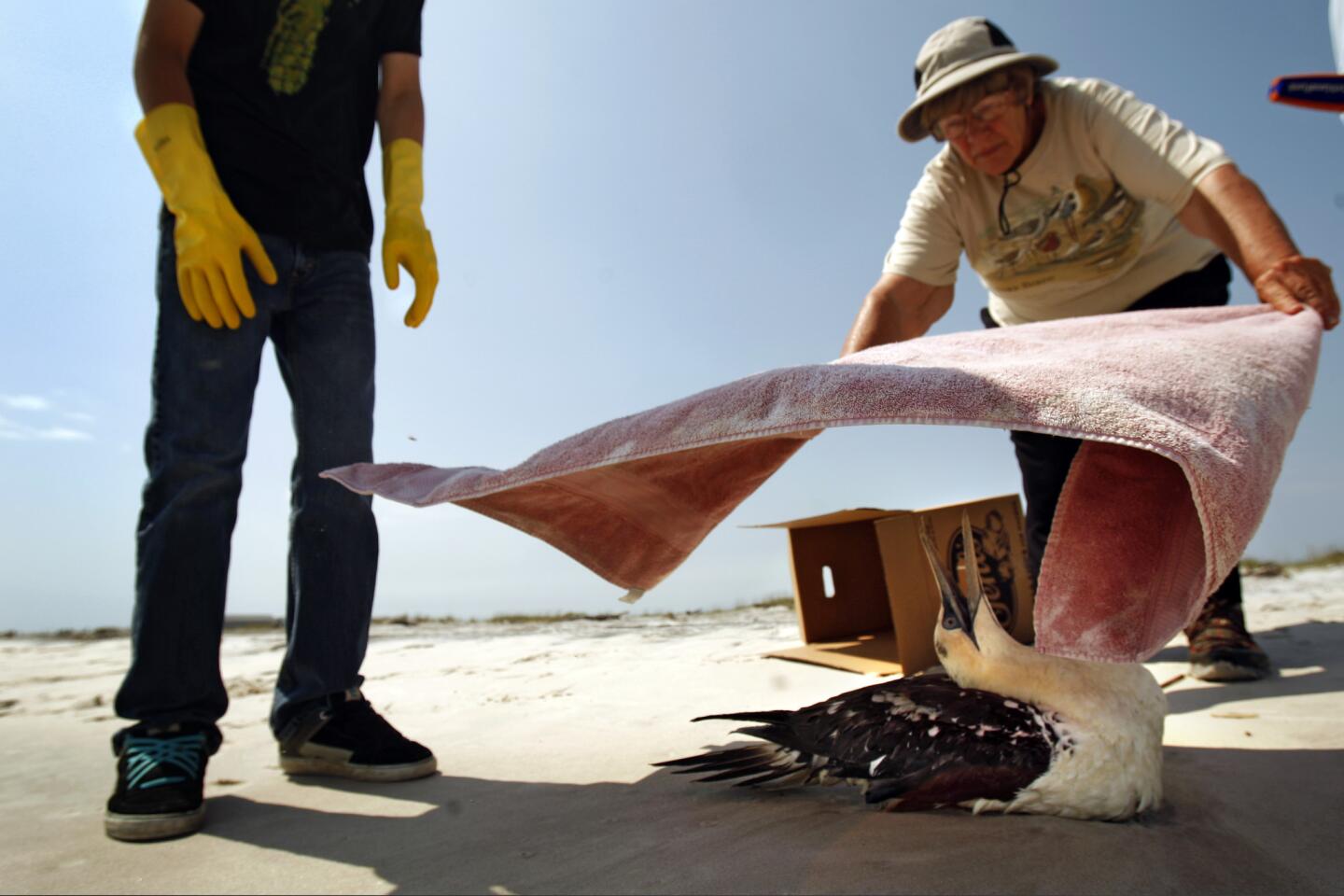
Wildlife workers on Ship Island, Miss., capture a northern gannet that had been partly covered in oil and was unable to fly. More than 900 miles of shoreline were affected, Times research found. (Rick Loomis / Los Angeles Times)
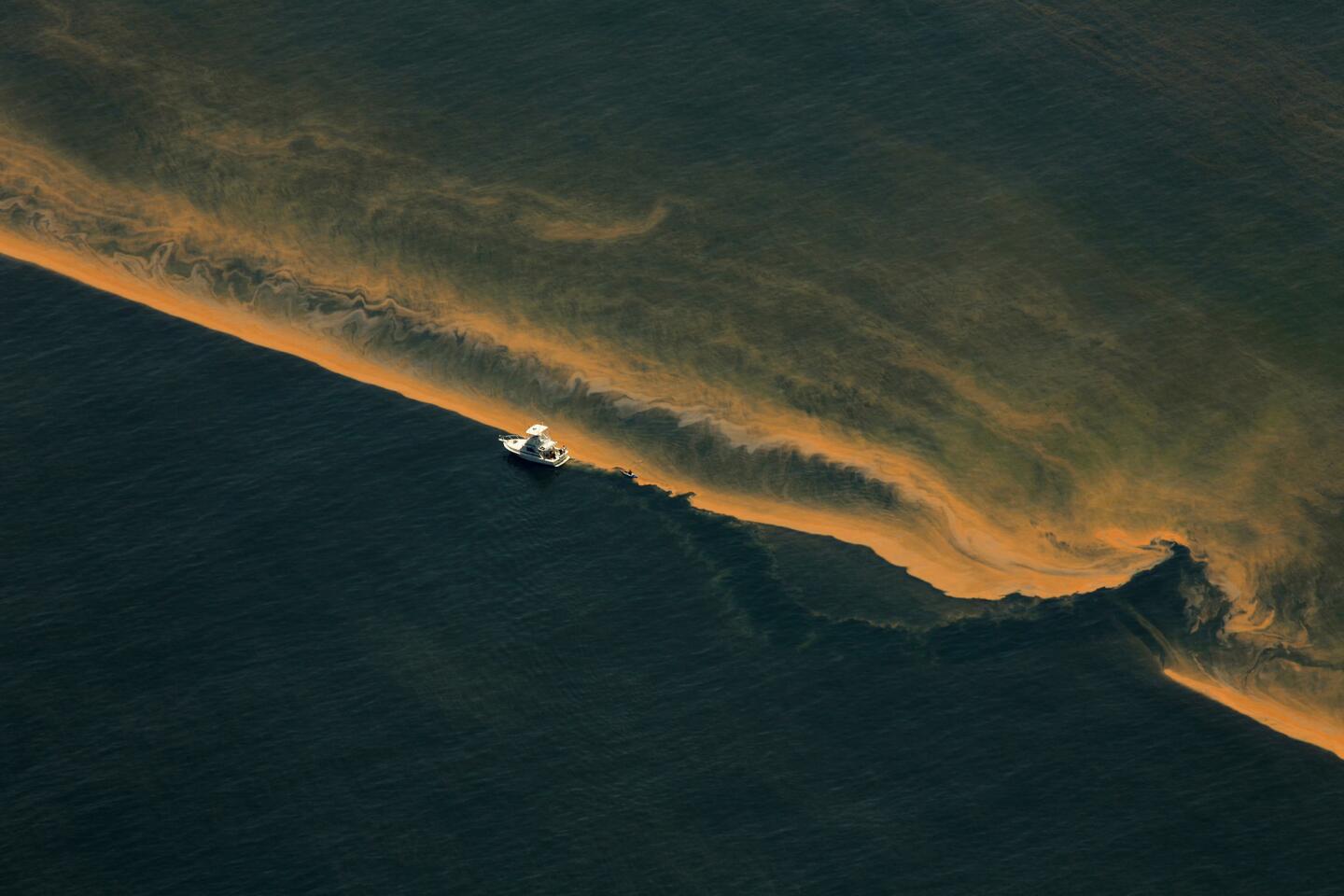
A boat makes its way along the edge of the oil spill in the Gulf of Mexico near the Chandeleur Islands on May 5, 2010. Oil reached the islands the following day, marking the first time it reached shore. (Carolyn Cole / Los Angeles Times)
Advertisement
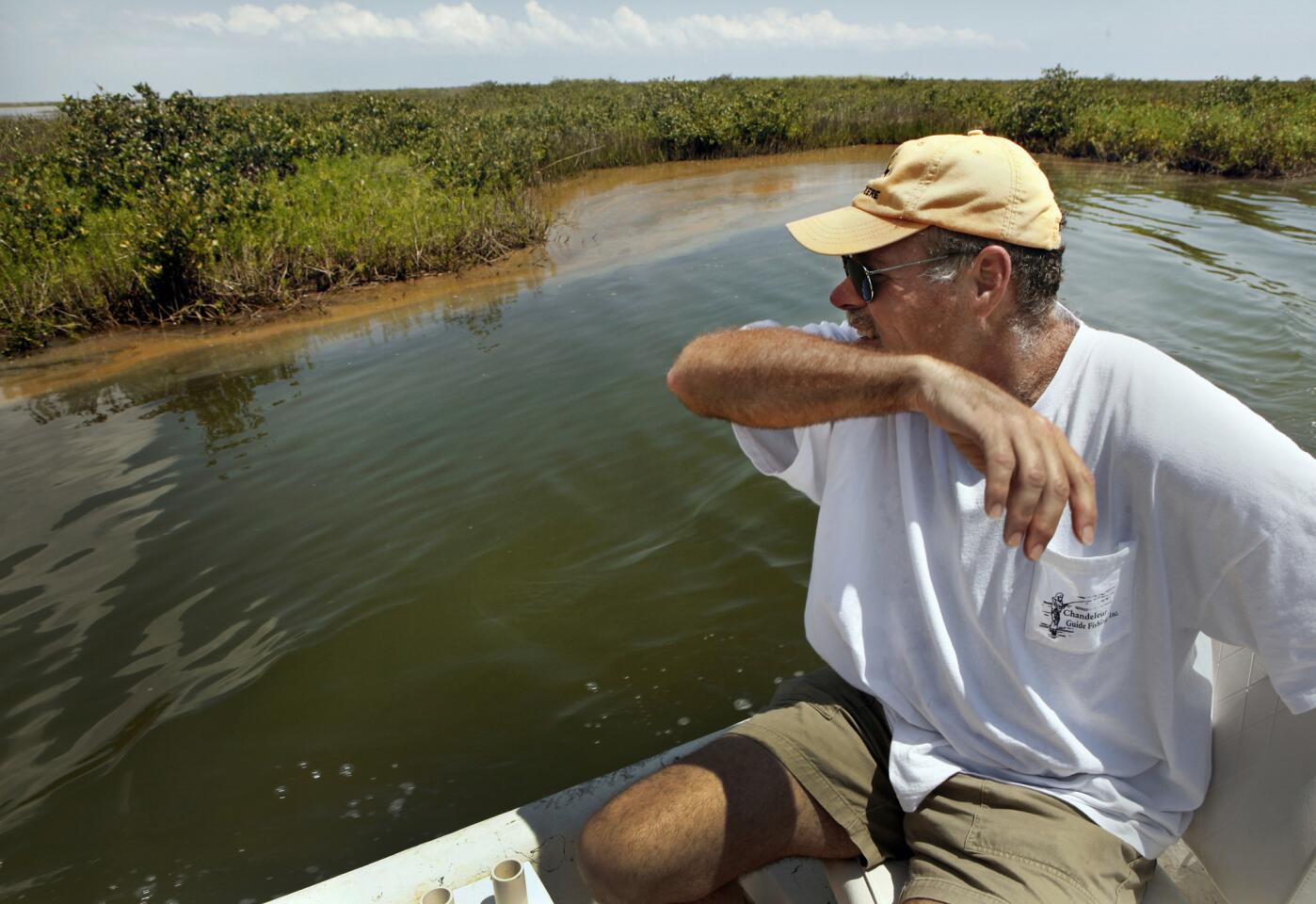
Mark Stebley, who had been fishing off the Chandeleur Islands for 25 years, said he’d never seen anything like this oil spill. “It’s not too late,” he said in May 2010. “If they would only do something now.” (Carolyn Cole / Los Angeles Times)
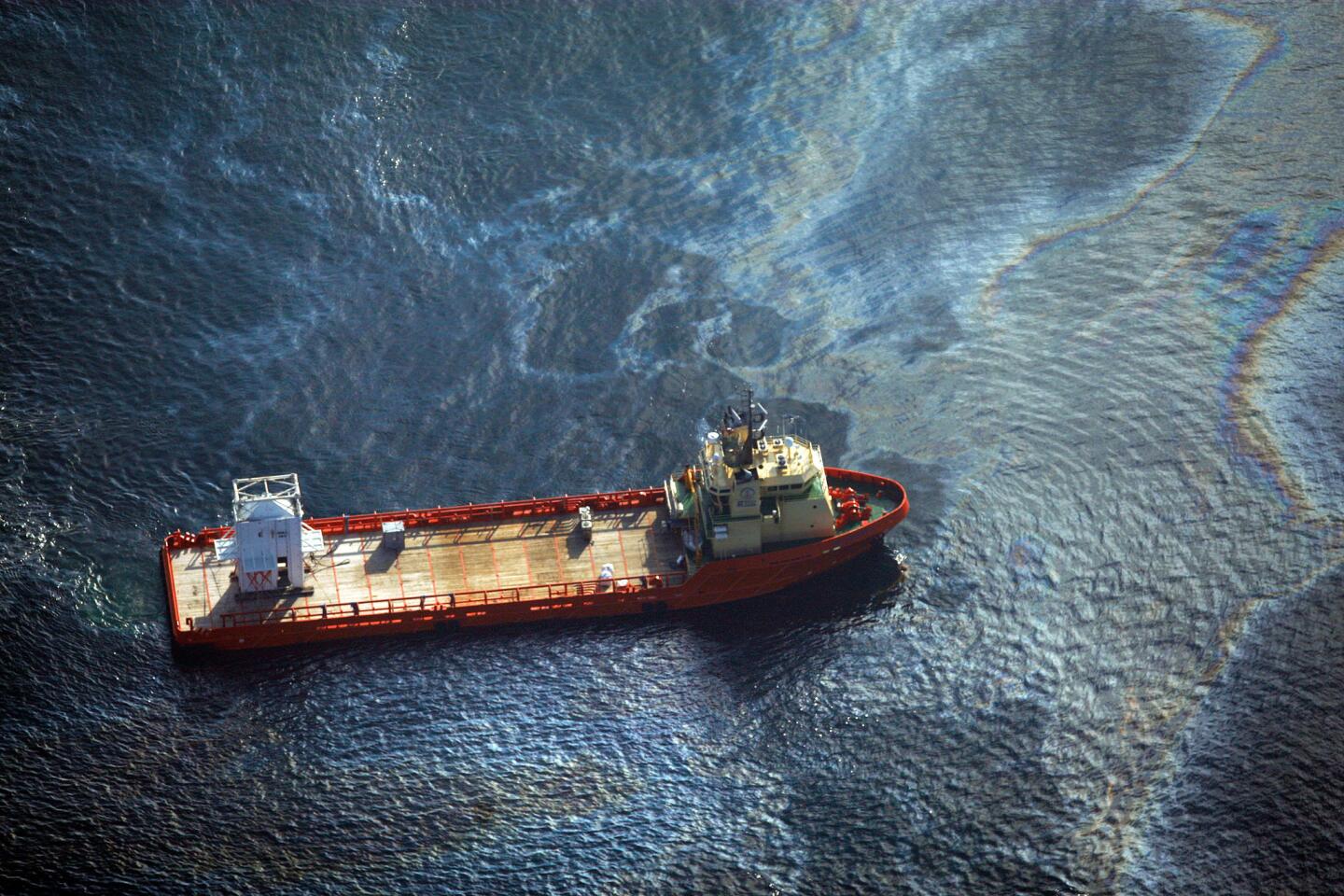
A containment device waits in May 2010 to be lowered into the water at the site of the oil rig explosion. The device was meant to cap the well but failed. (Rick Loomis / Los Angeles Times)
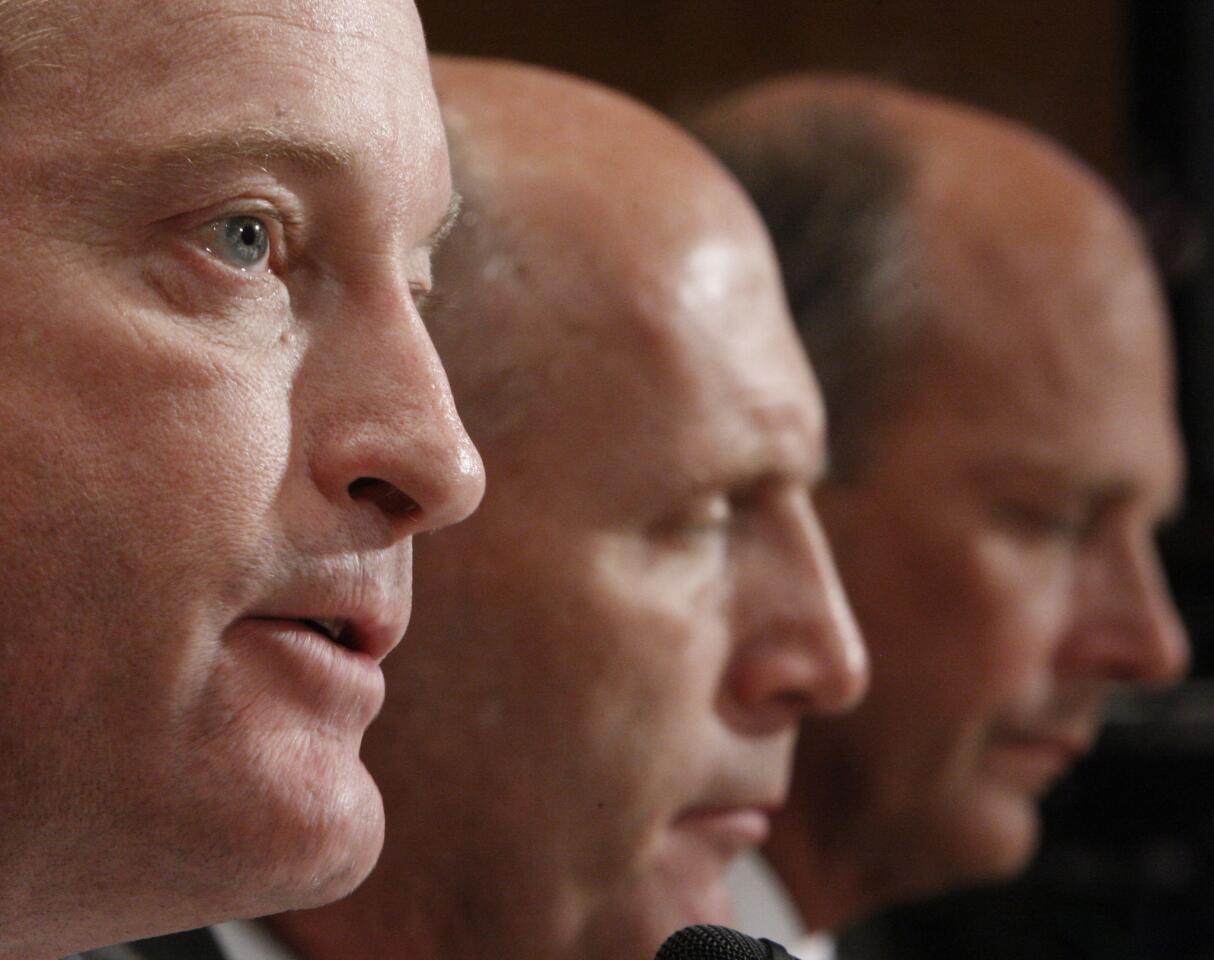
BP America Chairman Lamar McKay, from left, Transocean Lt. Chief Executive Steven Newman and Halliburton’s Tim Probert testify in the Senate on May 11, 2010, about the spill. (Pablo Martinez Monsivais / Associated Press)
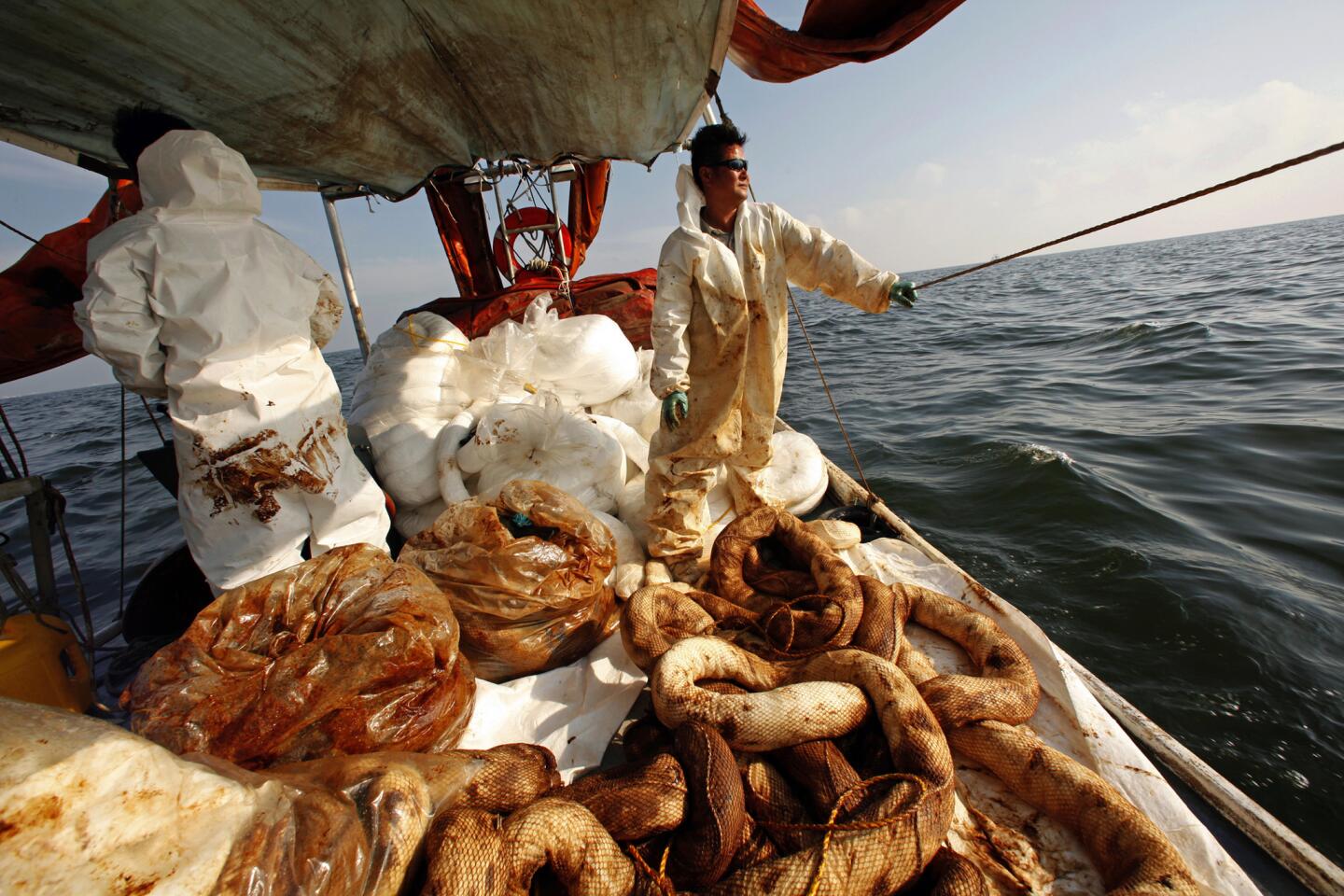
Cleanup workers wrestle with oil-soaked booms in May 2010. (Carolyn Cole / Los Angeles Times)
Advertisement
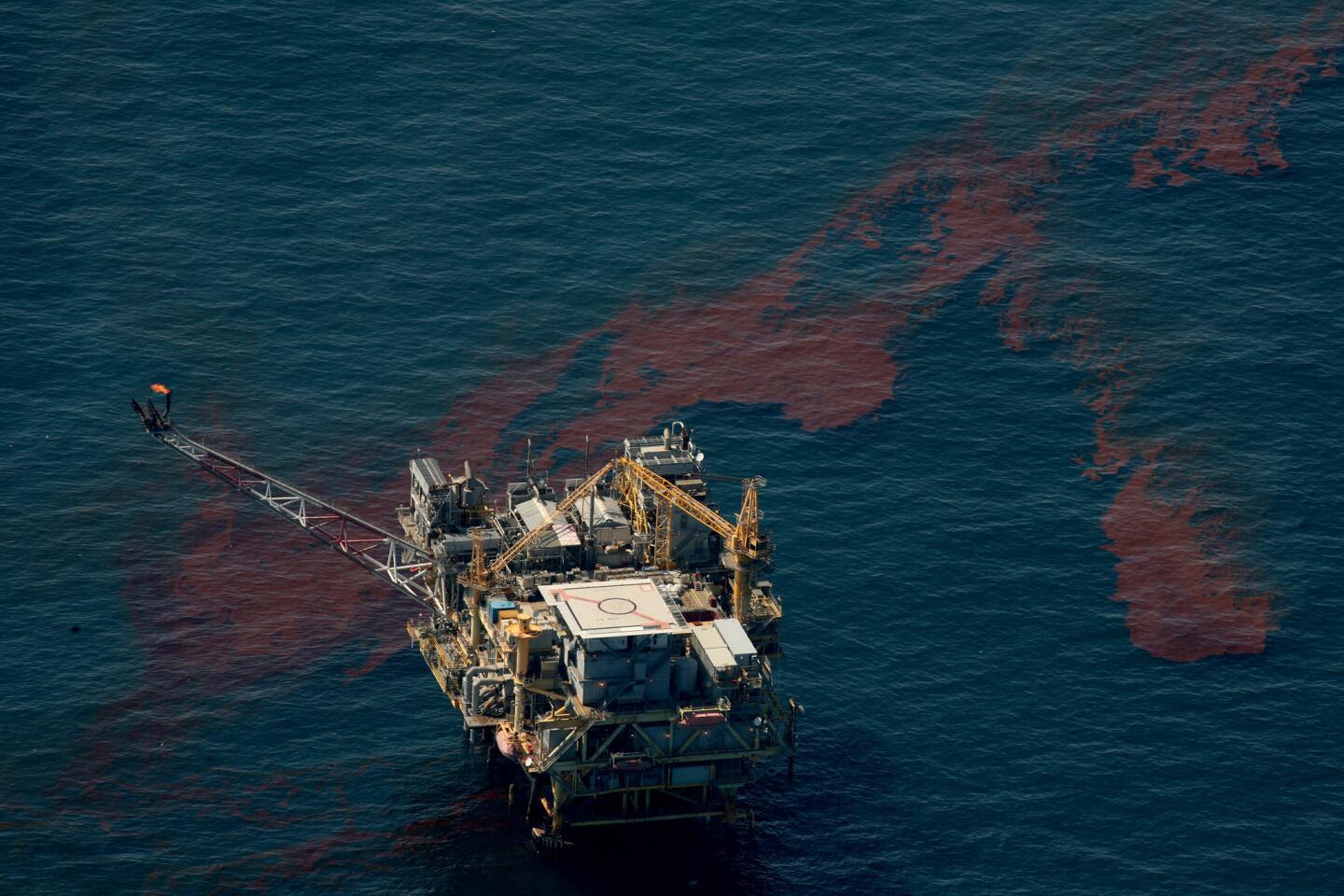
The oil spill in the Gulf of Mexico continued to spread despite BP’s efforts to cap the well. In May 2010, streams of oil float by another oil production platform as the oil heads toward the Louisiana coastline. (Carolyn Cole / Los Angeles Times)
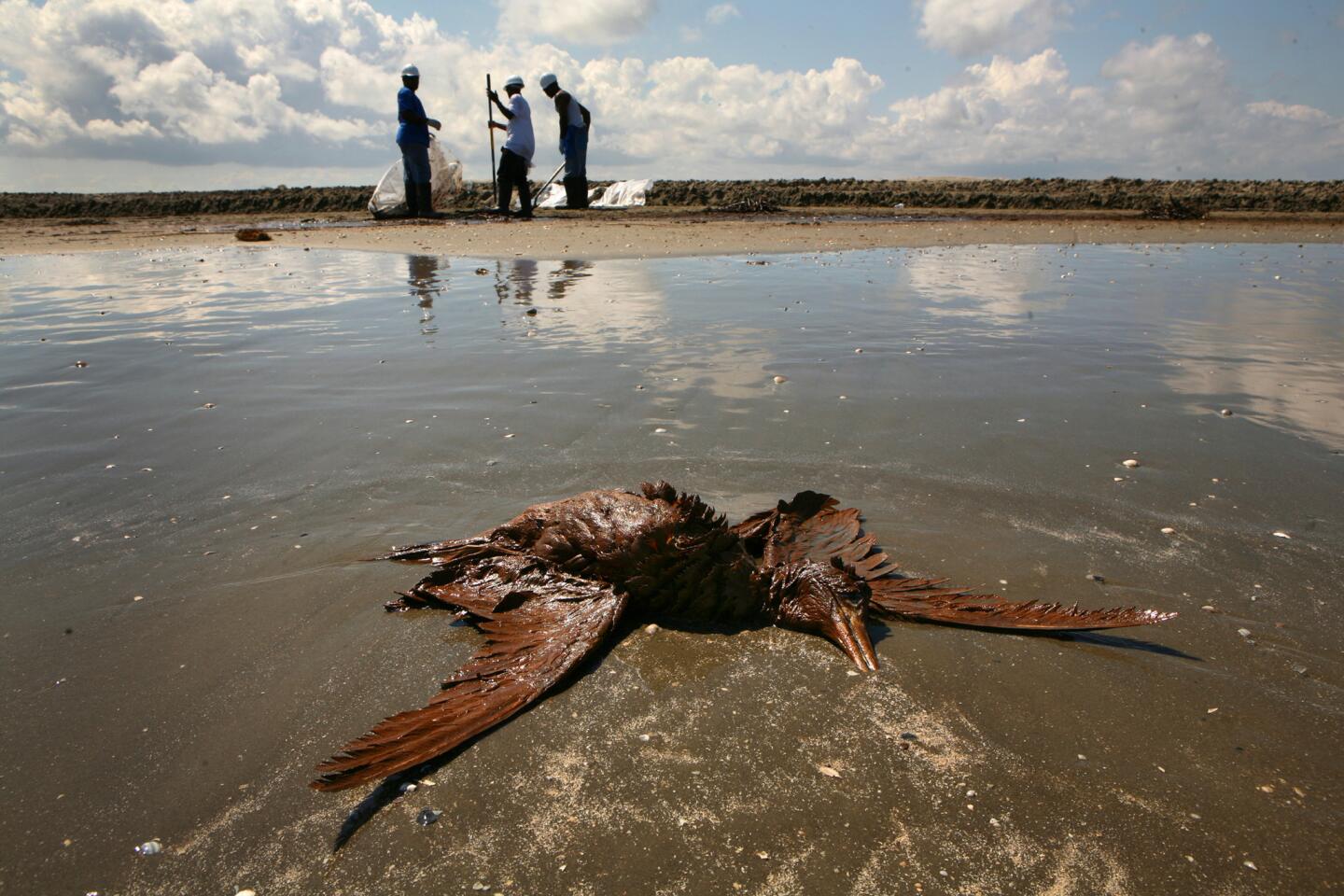
An oil-soaked bird washed ashore near Grand Isle, La. As of August 2010, more than 3,900 dead birds had been collected. (Carolyn Cole / Los Angeles Times)
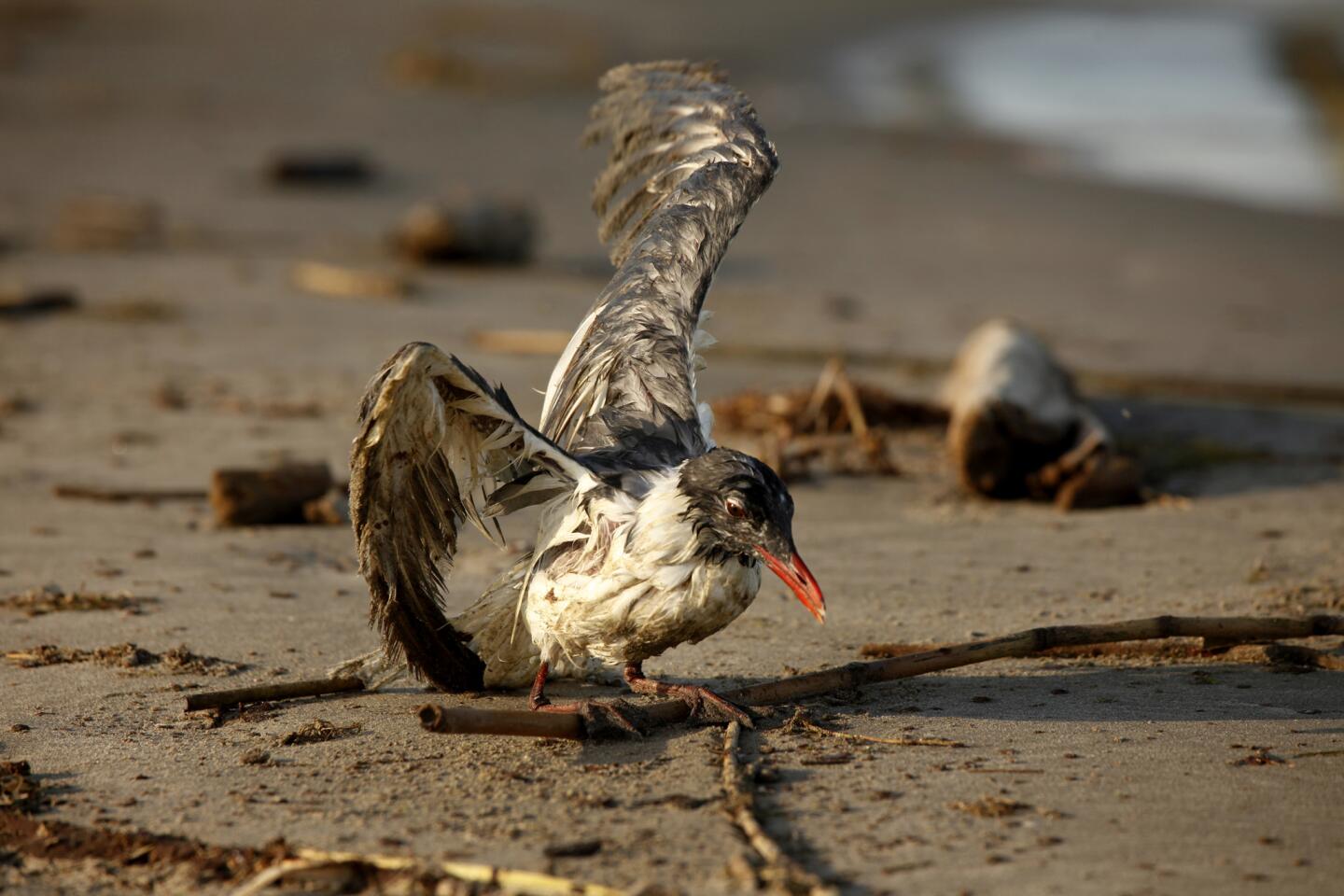
A gull tries to fly on a beach at Grand Isle State Park, La. The bird died overnight. (Carolyn Cole / Los Angeles Times)
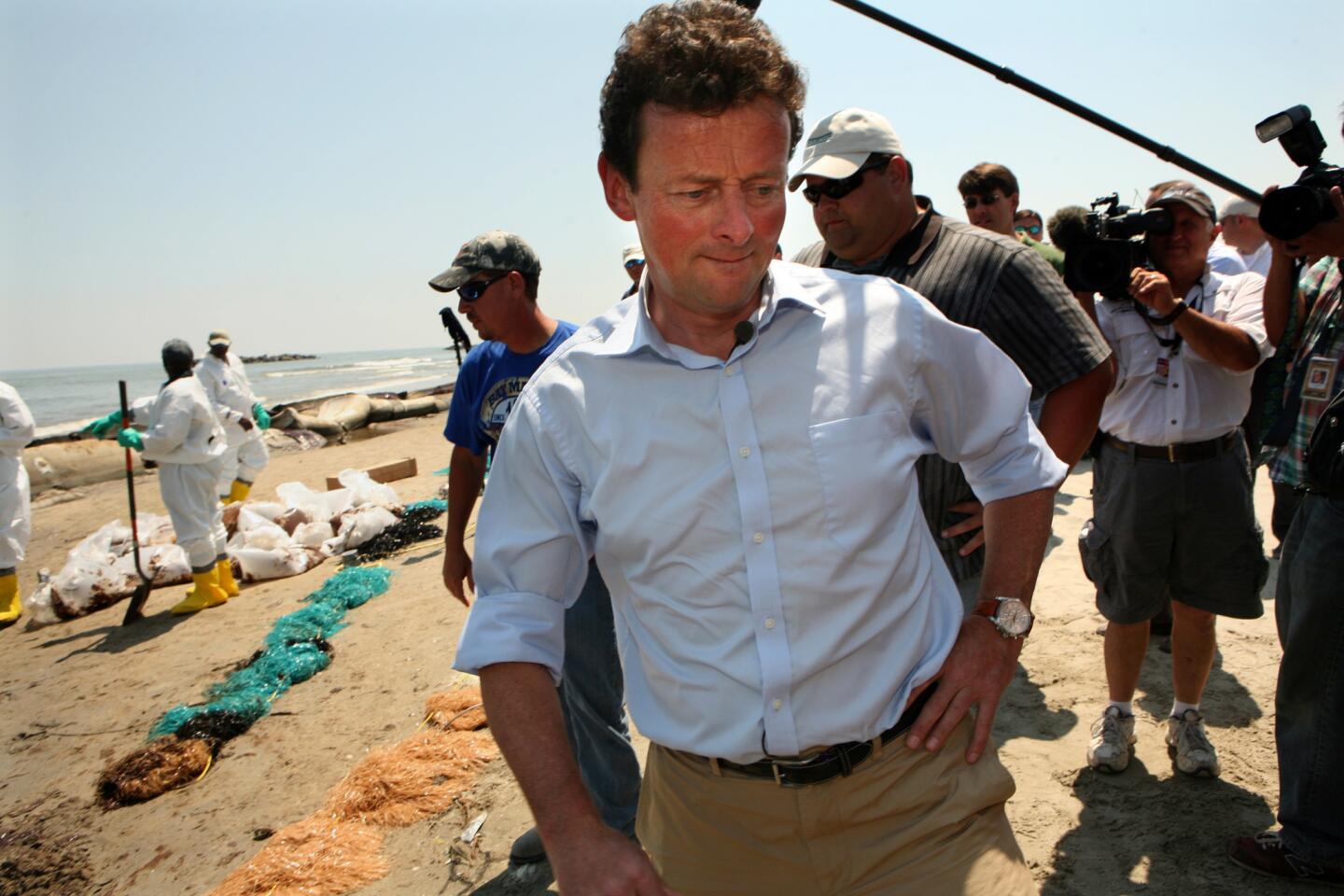
BP Chief Executive Officer Tony Hayward tours the cleanup operations at Port Fourchon beach on May 24, 2010. (Carolyn Cole / Los Angeles Times)
Advertisement
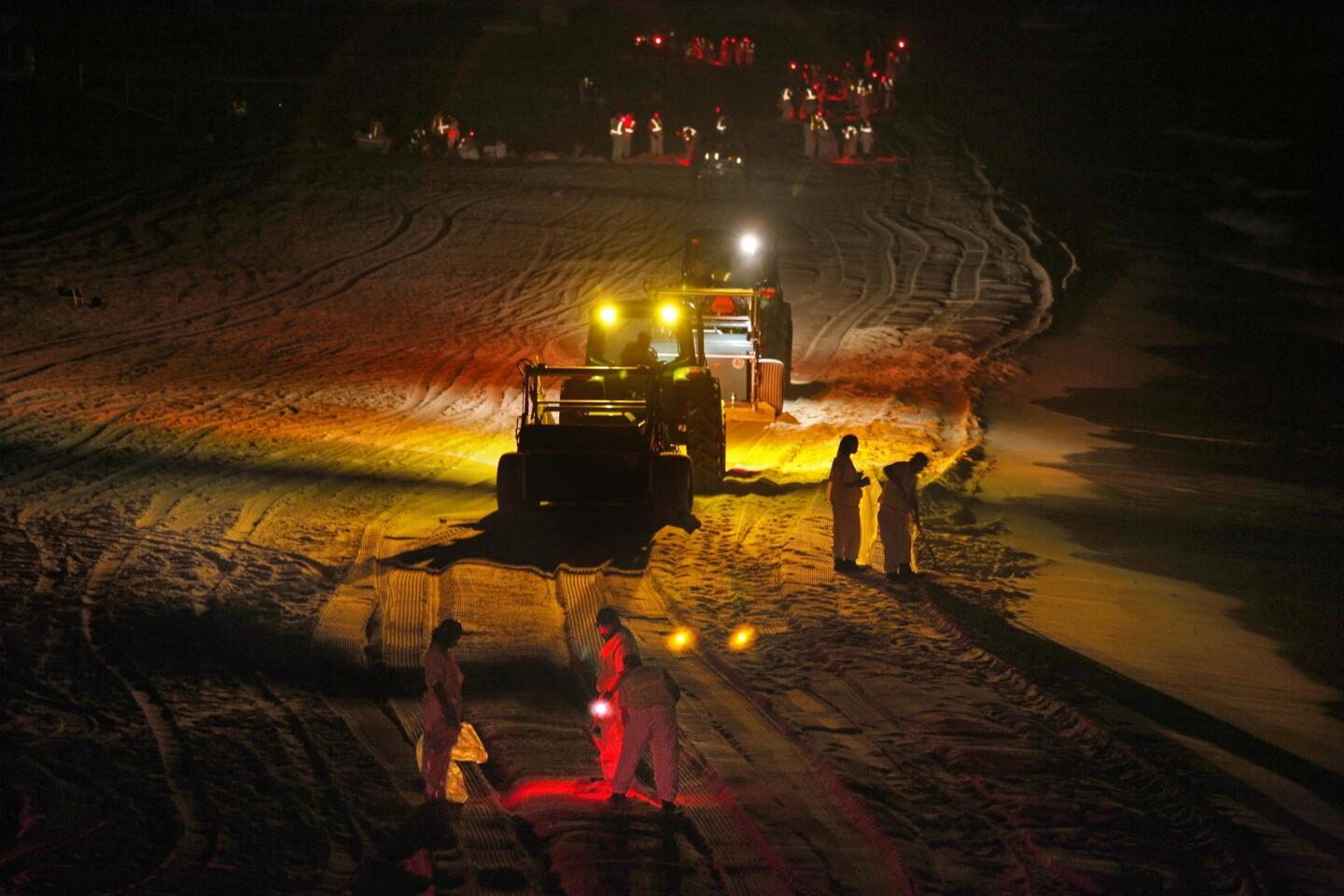
Cleanup crews work through the night to pick up oil and tar as it lands on the white beaches of Pensacola, Fla., in June 2010. (Carolyn Cole / Los Angeles Times)
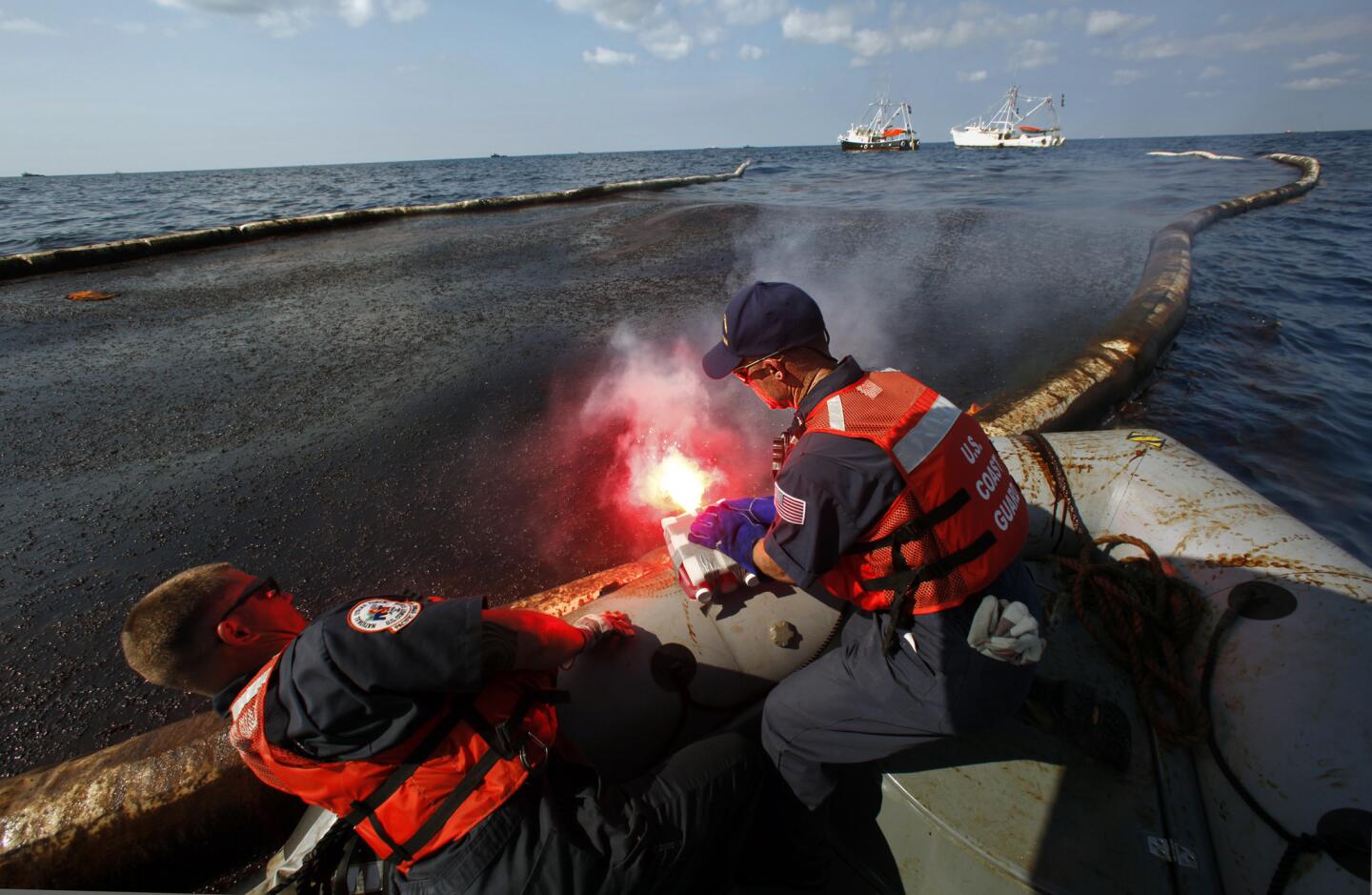
In July 2010, a Coast Guard team ignites oil collected on the surface of the water about 7 miles north of the spill site. Burning was just one of several ways to try to dispose of the oil, which continued to spill into the Gulf of Mexico. (Carolyn Cole / Los Angeles Times)
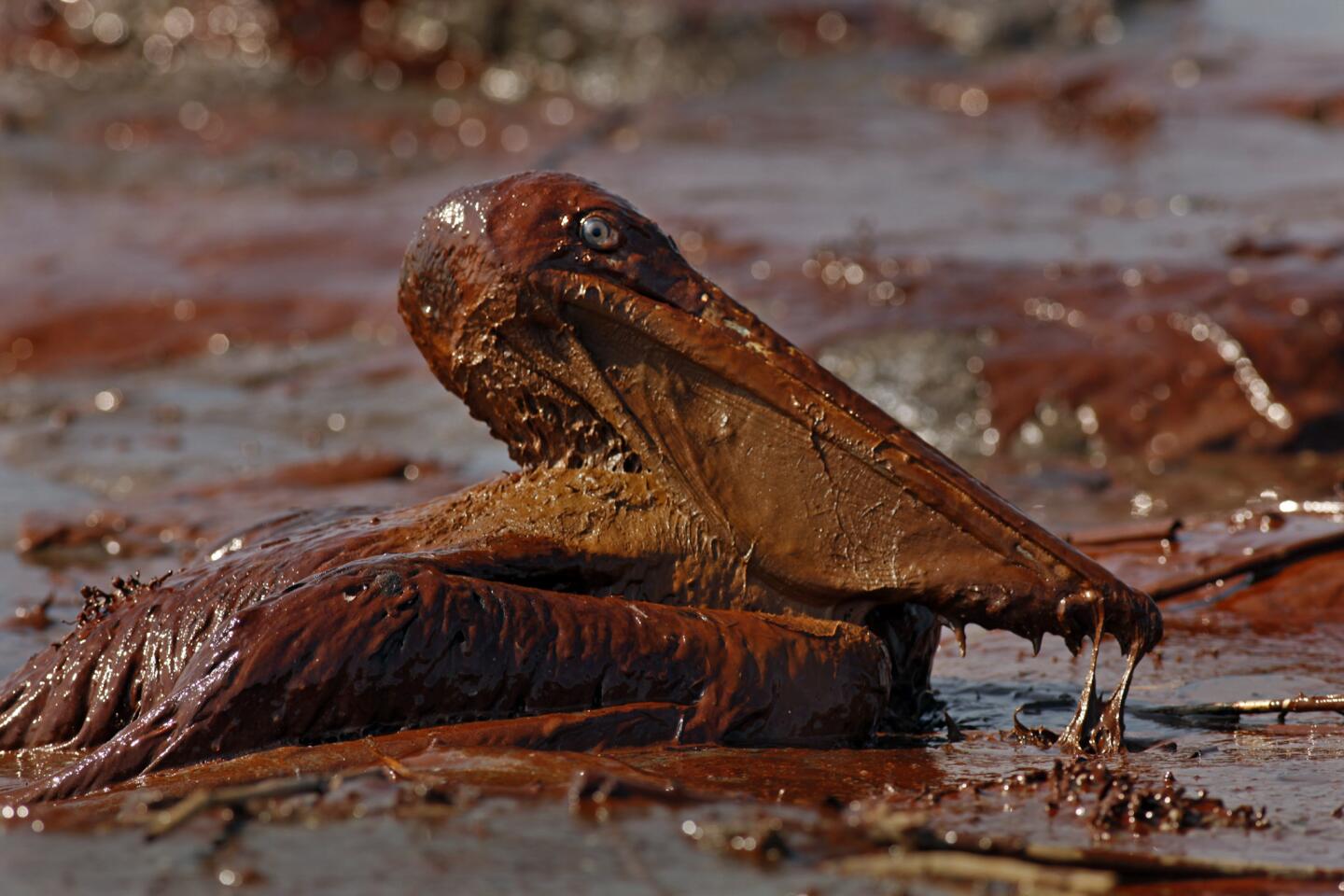
An oiled pelican on Grand Terre Island was picked up by rescue workers. (Carolyn Cole / Los Angeles Times)
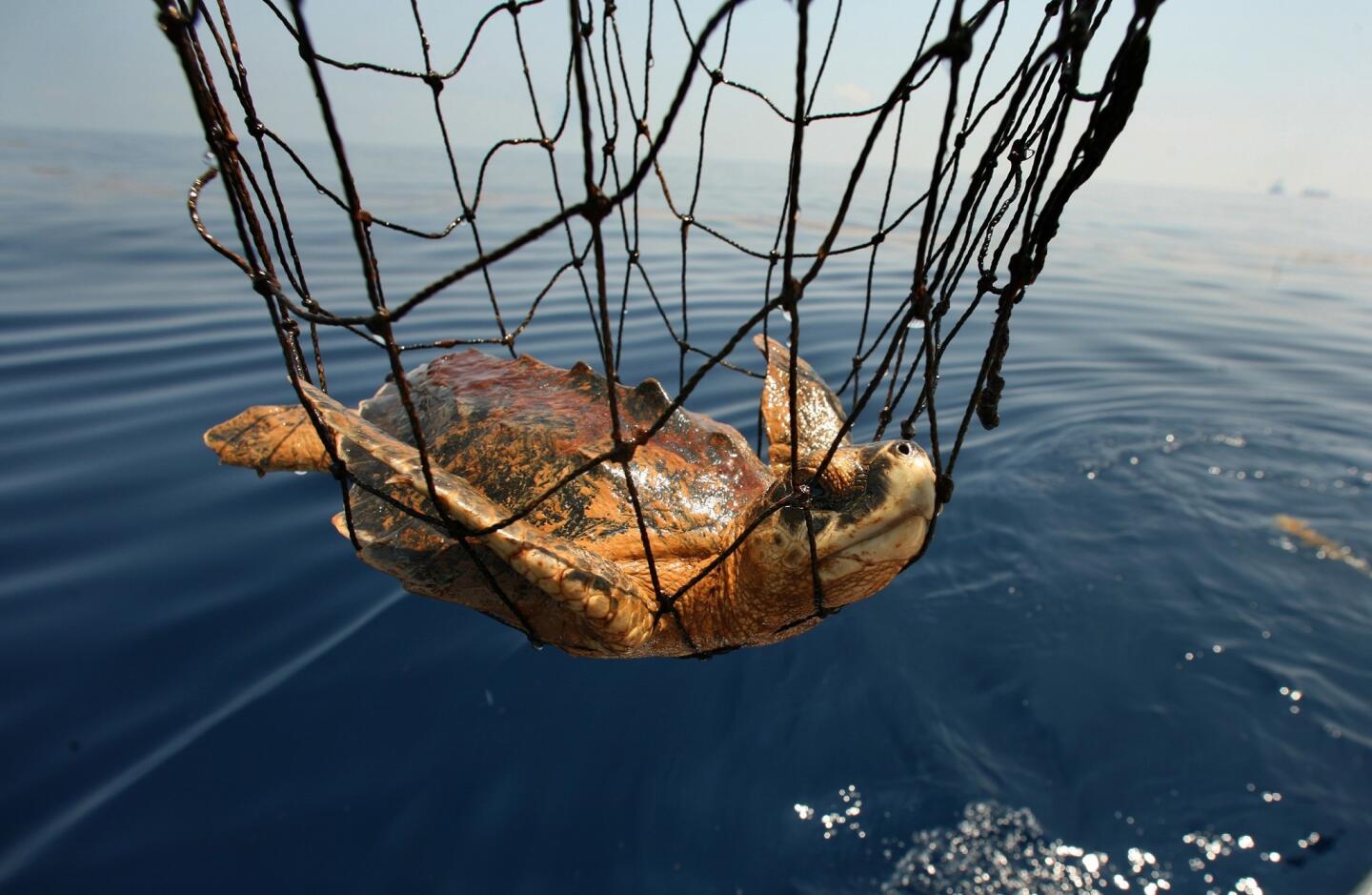
Experts recover a Kemp’s Ridley sea turtle near the spill site. Times research showed that 516 dead sea turtles were collected as of August 2010. (Carolyn Cole / Los Angeles Times)
Advertisement
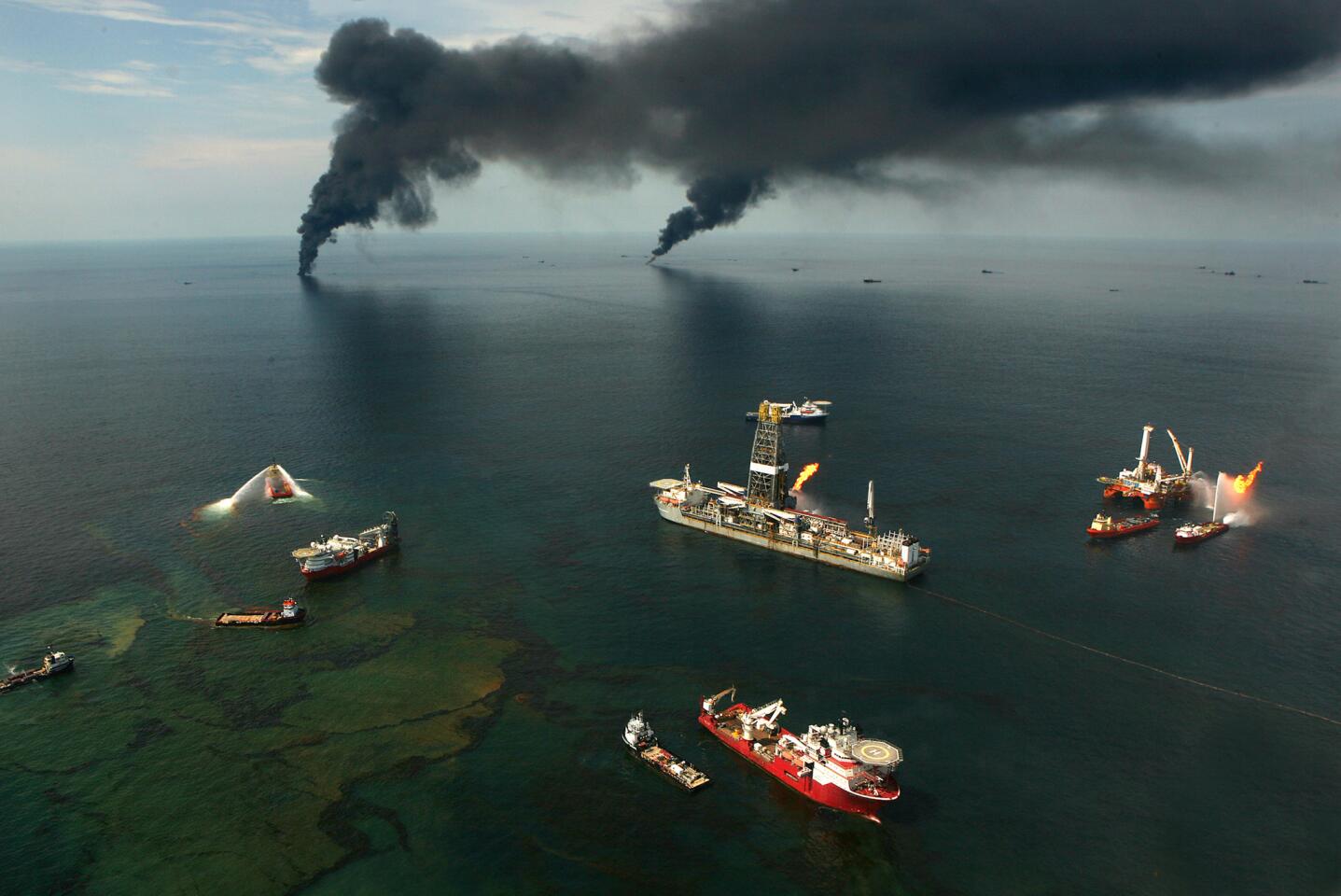
Black smoke rises from pockets of crude being burned in June 2010. Controlled burns removed 11.14 million gallons of oil, The Times found. (Carolyn Cole / Los Angeles Times)
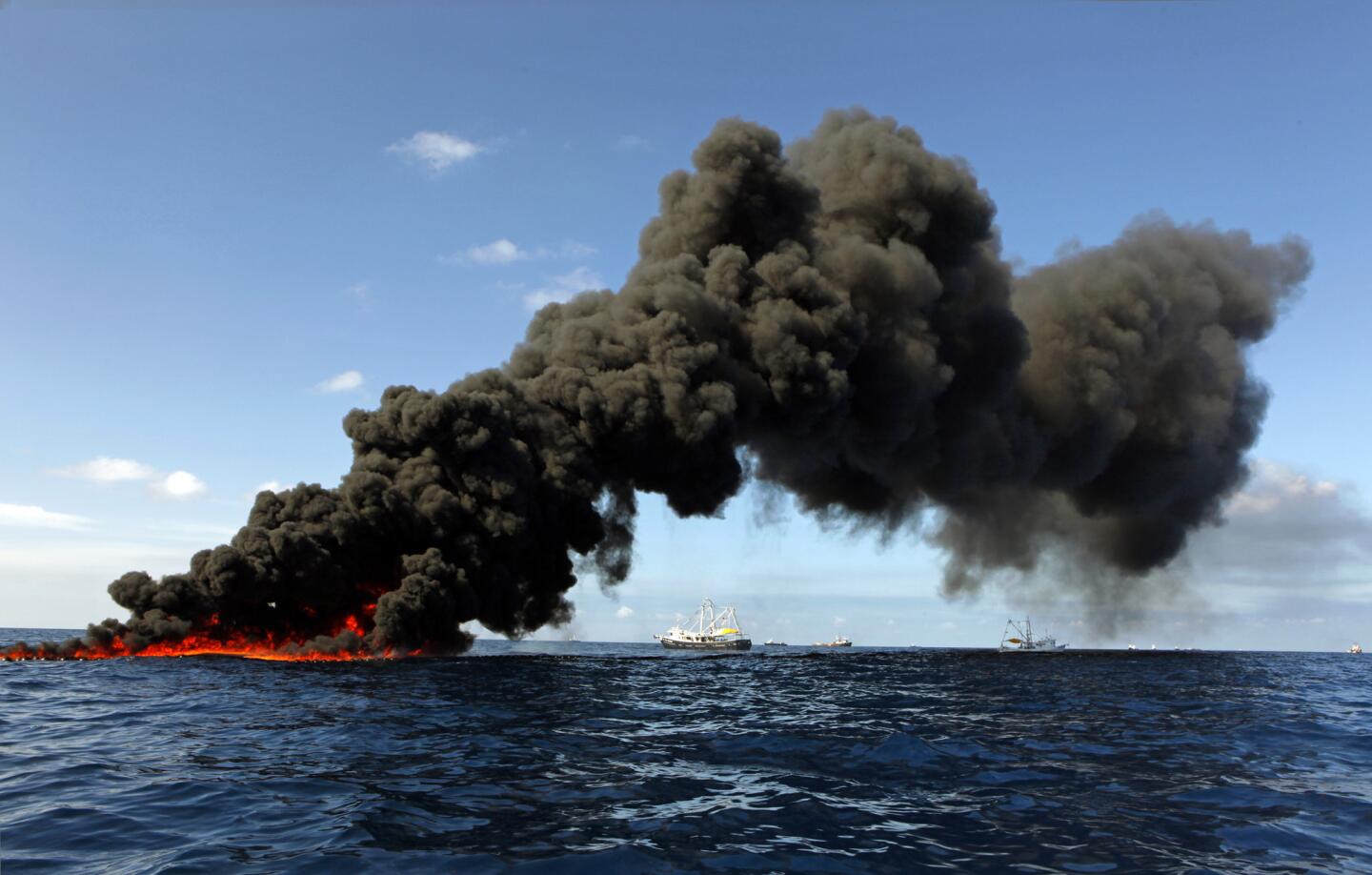
Boats skim oil and then ignite it on the surface north of the spill site. (Carolyn Cole / Los Angeles Times)
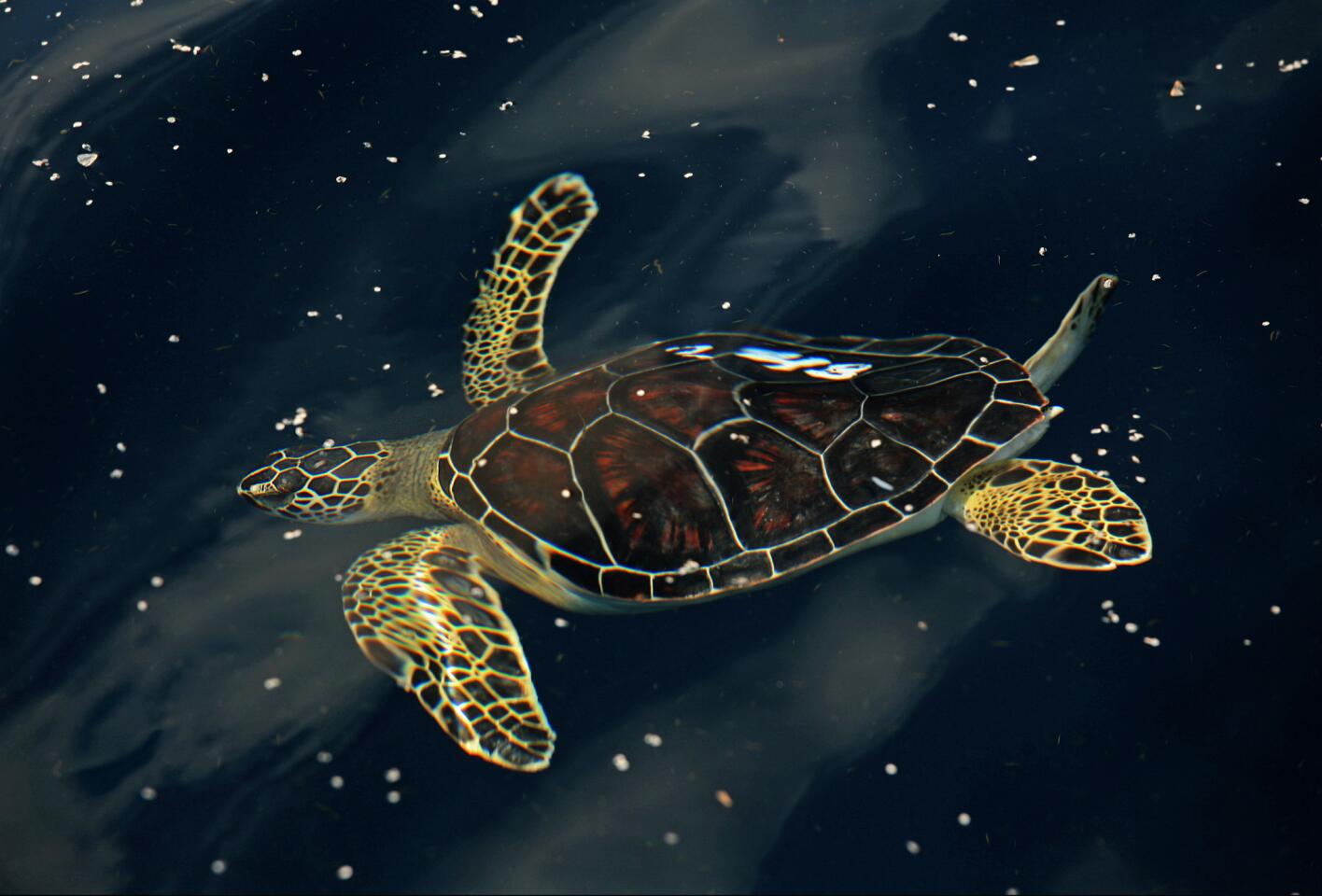
A green turtle swims in the Gulf of Mexico in October 2010 after being captured months before due to the BP oil spill. Thirty-two sea turtles were returned to federal waters some 50 miles south of Grande Isle, La. (Carolyn Cole / Los Angeles Times)







